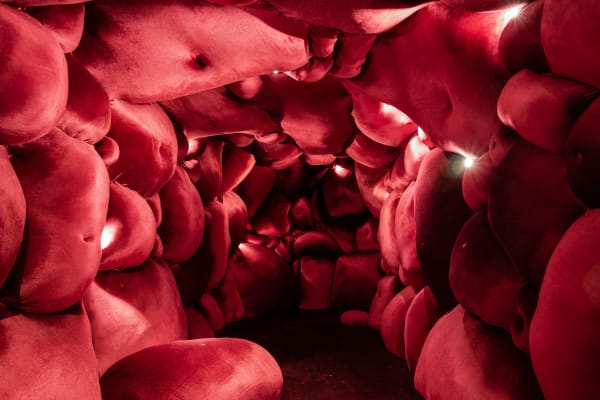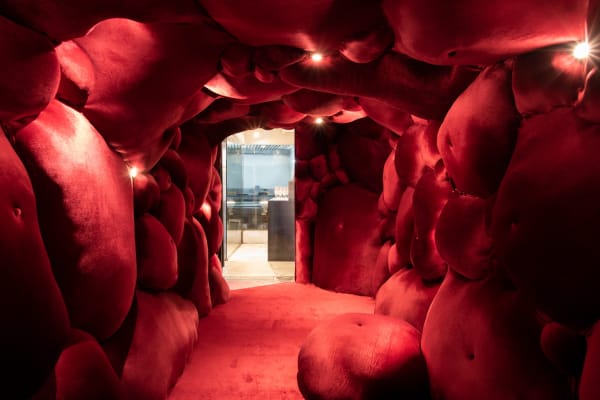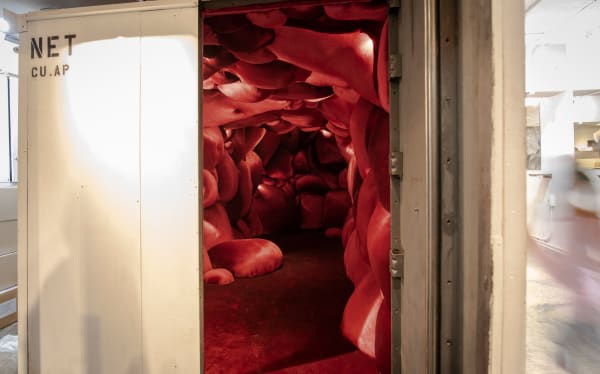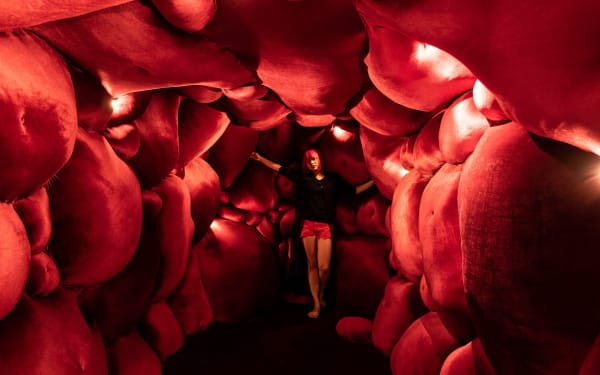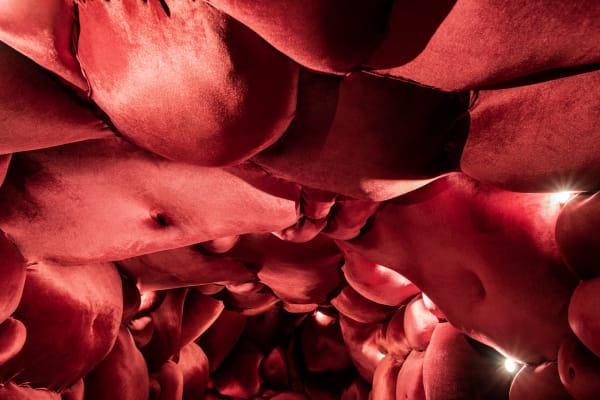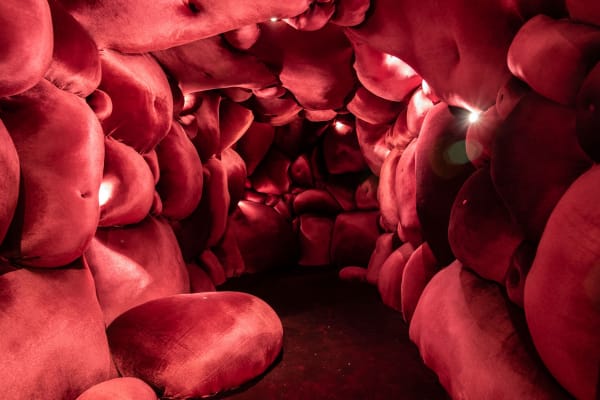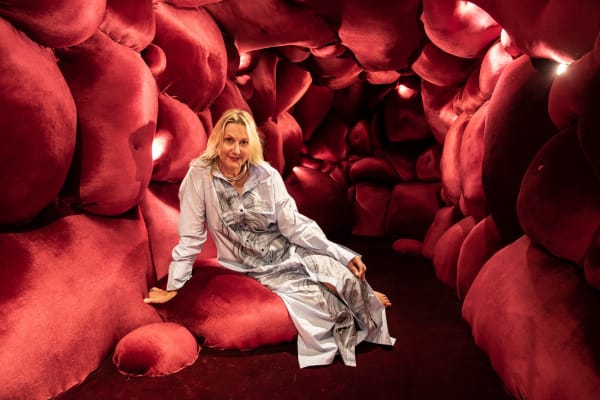Originally published by THE CONTAINER
Natalie Jane Clark is a British-American classically-trained artist, designer and educator. Her current practice is split between studios in the American West and Barcelona, Spain, and includes original sculptures, art consulting, curation, and design. Clark obtained a Bachelor’s Degree in Fine Arts, majoring in sculpture, from Brighton University in England. She came to the United States on a full-merit scholarship, and attained her Masters in Fine Arts from the Art Institute of Chicago. She followed her formal training with an Artist-in-Industry Residency at the Kohler factory in Wisconsin and has taught at university level in Texas and Wyoming. Clark’s 9/11 Memorial submission was a finalist in the design competition and has been exhibited in New York. Her works are in both private and public collections within the USA, Canada, and Europe.
Feminist art never really stood a fair chance. Critically, it poses a great problem of authentication; how can a piece of art, presenting a gendered truth, still be perceived as universal? While socially, it has been shunned by the mainstream, being claimed as too elitist, intellectualist, and white. Yet women artists, carried by the waves of social activism and the feminist movement of the sixties, still rightfully demand a just indemnity for centuries of damages done to the representation of females as artists, and to the works that seek to present another truth—women’s truth.
Some female artists do filter in, though, to the mainstream—some are more politically inclined and some are less. The sixties and seventies saw also the rise of a number of female performance artists, using their body as a central element in their artworks, but socially, these works gained less traction than the works of racial minorities or LGBT, for example. It is less politically correct to eschew the works of minorities.
When I met Natalie Clark a few years ago, she shared with me some her of sculptural works. I was impressed by their strong presence, phallic and masculine in their femininity—sharp and unforgiving—but also delicate in their simplicity and high polish. Her series of sculptures Crystalline Spires, Faceted Gems, for example, represents an integration of nature and culture, of facets and colors, form and emotion, and make reference to her global mobility and impressions those experiences, journeys, and cultures left on her. She is a strong refined woman, and so is her art.
Over the last year and a half, though, I have noticed a change, in her attitude and in the works she produces: sharp corners turned into curves, and outwardly perception turned inwards. Her work has evolved to be more personal, tuning into her own changes as a person and a woman, almost in a spiritual way, a celebration of the self.
I was intrigued by those changes, as a curator and as a friend, and invited Clark to produce an installation at The Container that explores her evolvement as an artist. Clark, who usually produces outdoor installations and sculptures, seemed like an interesting choice. I was curious to see how she can contain her creativity, that usually finds inspiration from vast open-air settings, in the gallery’s half-sized container enclosure, and by her newly found aesthetics. How can we make a visual and social impact, especially in Japan, in a ‘men’s world’?
We started to discuss her exhibition more than a year ago, exchanging ideas and notes, and the installation kept changing, along with the personal changes and understandings that Clark gained along the way. Two things were clear from the get-go, though—it is ought to be a piece that celebrates womanhood and femininity, and it needs to be physically and psychologically engaging—a bodily experience.
Initially, I thought that she cracked it when she sent me some drawings of a life-sized vagina, made of washi paper, where spectators would be able to walk into it, navigating inside a woman’s body. However, we were both concerned that such an installation puts more emphasis on mere biology than representing the notion of femininity, and that perhaps, unintentionally, we would be doing a injustice to the cause, and possibly, to Clark’s beautiful, intellectually subtle, way of working. So we kept discussing various processes, materials, and visuals, from latex to inflatables, as possibilities to fabricate the piece.
Meanwhile, the #MeToo movement caught the attention and interest of the public worldwide, and it made both Clark and me more reflective. It became more important. The reaction to the movement in Japan was very mixed, with much of mainstream press choosing to ignore it, until it was, eventually, picked up by online news sites. Although some high profile cases came to light and resignations followed, some of the victims suffered an onslaught attack on social media. Those reactions crystallized that such an exhibition is particularly important to do here and now.
Natalie Clark’s resulting installation at The Container, Into the Curve, creates an immersive environment spectators can walk into. The entire space is saturated with madder red textiles, assembled with upholstery techniques, to create a tunnel of femininity. The shapes, round and curved, may recall female breasts or hips, or to the more sexually inclined, a vulva or a vagina. To others, the choice of the red fabric perhaps alludes to being trapped in internal organs, but also communicates empowerment and passion. Overall, the installation is very abstract and open to a variety of personal interpretations, but the sensory impact is exact and precise. To quote Clark, “I’m creating an immersion of the feminine nude form, an undulating upholstered interior installation, deep buttoned, curvaceous, figurative. Think bums, boobs, bellies of no specific gender. Soft and pliable, a human landscape; interactive, immersive, and universal—saturated in deep hues of madder red. I am responding to the influence of color imprinted on me. The elemental, emotional and universal symbolic use of color.”
The choice of upholstery techniques to fabricate the piece was not coincidental. The craft is associated with domesticity and tradition, and creates an inviting homely environment. Spectators are encased in the installation, and can touch or lean against the soft surfaces, like a womb. Clark has created an environment that induces comfort and safety, making no apologies for linking maternality, nurture and fertility with women’s empowerment and self-pride. Her keen interest in growing her own food and extensive gardens of flowers, nurturing from seed to product is a pivotal element in her installation at The Container, and her evolution as a nurturing feminine artist.
Clark’s incessant travels and enthusiasm for art, design and craft, enable her to collaborate with artists worldwide. We are terribly grateful for the help of Matthew Caldwell, of Phoenix Upholstery, in the UK, to realize this piece and make it possible, and for the beautiful photographs of women by the young Spanish photographer Maty Chevriere, which were taken in Clark’s studio and gardens, and are included in the catalogue. Lastly, The Container is also delighted by and appreciative of the support of G.H. Mumm for this exhibition.
